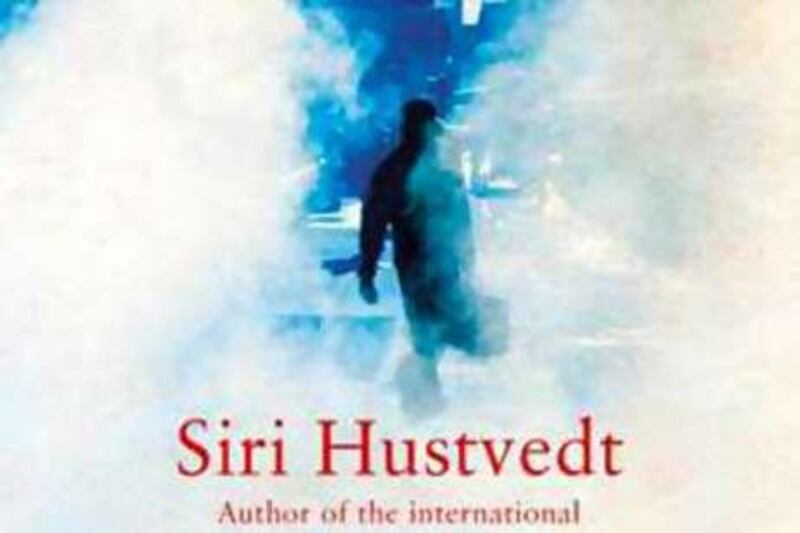Max Blaustein is the author of fifteen novels, four screenplays and a book of essays. He is a cultural icon and a literary superstar who has scraped the dark corners of humanity in his stories. Among critics and fans alike, he inspires an adoration that borders at times on hysteria. He is dashing, handsome, bespectacled and gaunt. But it is Max's absence that cuts like a scar through the middle of Siri Hustvedt's fourth novel, The Sorrows of an American.
After a reading to promote Max's fifth novel at Columbia University in New York, Inga Davidsen, a twenty-five-year-old graduate student in philosophy, asks him about narrative structure and then hands him a copy of the book to sign. "I surrender," he writes. "Don't leave." "In 1981," Hustvedt writes, "Max was forty-seven years old and had been married twice. He not only had a reputation as a major writer but was also known as a profligate seducer of young women, a carousing wild man who drank too much, smoked too much, and was, all in all, too much, and Inga knew it. She didn't leave. She stayed until he died of stomach cancer in 1998."
Hustvedt builds the architecture of Max's appeal primarily through the first-person narration of her protagonist, Inga's brother Erik Davidsen. Erik mulls over the story of his sister's first encounter with Max early on in the novel, which is set five years after the writer's death. Erik gives Max's character depth by recollecting him as a man, friend, father and lover to the various characters who mourn him. But Hustvedt reaches further. She gives Max an entire life's work, as she did Bill Wechsler, the artist who anchored her previous novel, the international bestseller What I Loved.
In that book, Hustvedt delved into the acute details of Wechsler's paintings and the sprawling intricacies of his boxlike installations. Though not directly or explicitly based on the work of any known artist, readers could vividly visualise Wechsler's creations. In The Sorrows of an American, readers are likewise treated to the characters, stories and cinematic scenes that Max invented. Hustvedt imagines more than a world for her characters to inhabit; she constructs a vast, complex labyrinth of creative pursuits that tunnel, both beautiful and dangerous, through the space and time of the novel.
In addition to Max's work, Hustvedt lends Inga an extensive history of lush, cerebral writing projects. Inga's daughter Sophie writes poems that are fully transcribed in Hustvedt's text. Miranda, the beguiling woman who moves into the ground floor flat in Erik's building, designs book covers for a living and makes haunting drawings of her dreams that remind her landlord, a recently divorced psychoanalyst insufficiently grieving his recently deceased father, of Goya's Los Caprichos.
Miranda's ex, an obnoxious, aspiring art star, assembles material for a narcissistic gallery exhibition. Miranda's daughter steps in with a ball of string that she wraps around everything, making soft, mobile sculptures "to tie things up." And somewhere in Minnesota, an elderly woman crafts painstakingly detailed dolls and dioramas that may - or may not - explain a secret Erik discovers in a long lost letter the woman wrote to his father.
In addition to three previous novels, Hustvedt has published a book of poetry, two nonfiction collections and an anthology of essays on painting called The Mysteries of the Rectangle. All of her writing is intensely visual. But her fiction is less about art than about art's attempt to render trauma in words and images. What gives The Sorrows of an American its exquisite, piercing pain is the fact that art cannot completely do so. "Trauma isn't part of a story," Erik says to himself at one point. "It is outside story. It is what we refuse to make part of our story."
To a certain extent, The Sorrows of an American is a novel grappling with the consequences of September 11, 2001. But Hustvedt wisely peels back one trauma to reveal another and then another still. Erik discovers a long memoir and a short missive among his father's affects. Together, the two texts crack open the history of Norwegian immigrants in the American Midwest, where one generation (Erik's grandfather) was wiped out by the Great Depression, and another (Erik's father) was torn apart by World War II.
Erik never finds the neat and tidy story he is looking for, just as he never really divulges the experience that haunts him most - the suicide of a former patient in 1992 - or comes to terms with his anger over the US-led war in Iraq. Hustvedt folds three generations together - "My grandfather shouts in his sleep. My father shoves his fist through the ceiling. I quake" - in a chain of psychic associations that create a shattered, poignant rumination on loss. The only redemption to be found is tucked into the imagined artworks that Hustvedt's characters leave behind.
Kaelen Wilson-Goldie reports from Beirut for The National.





